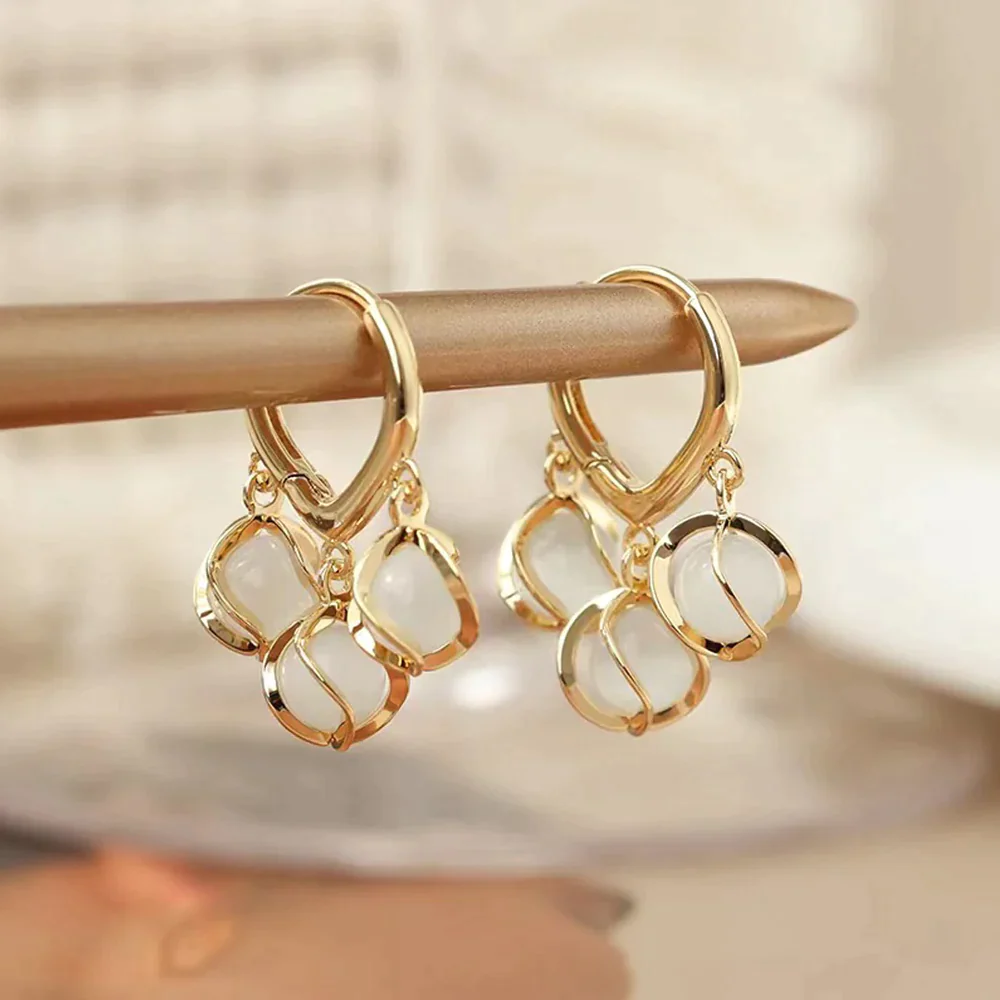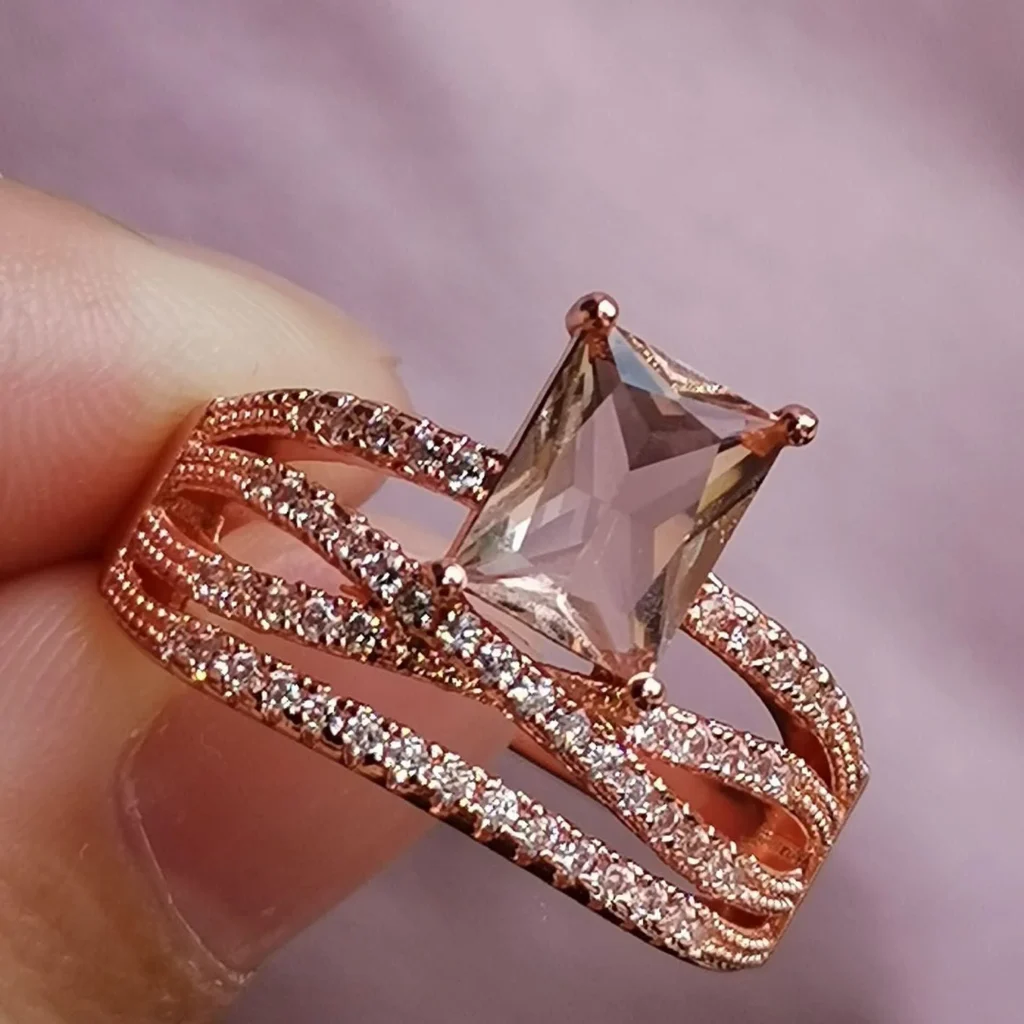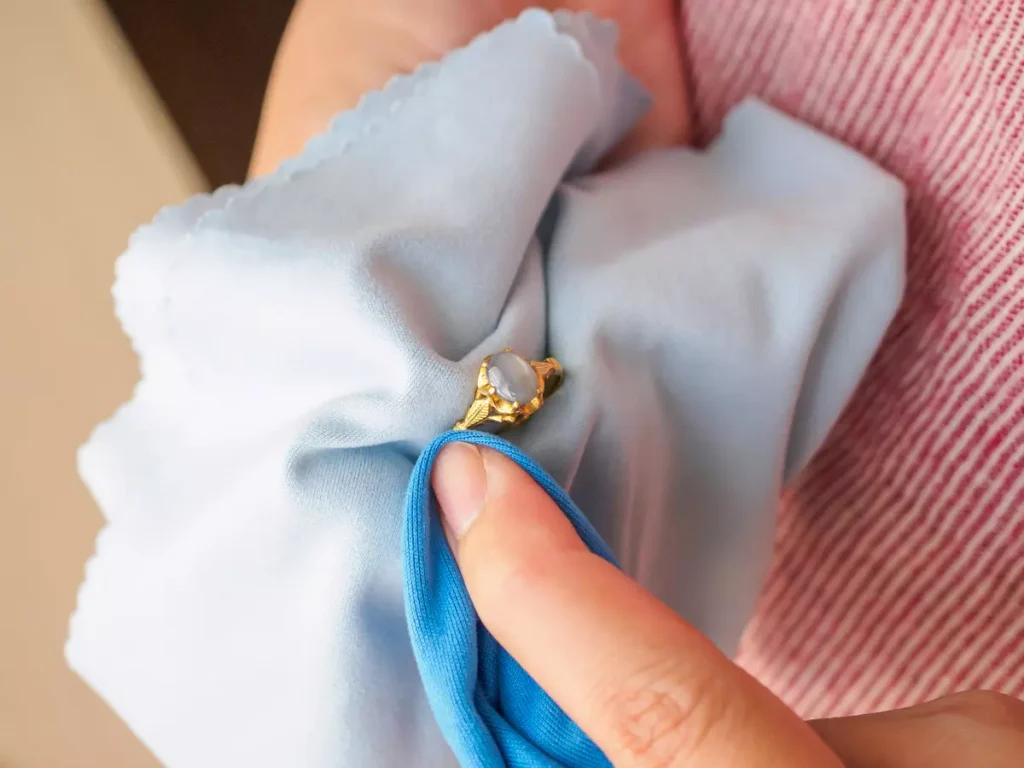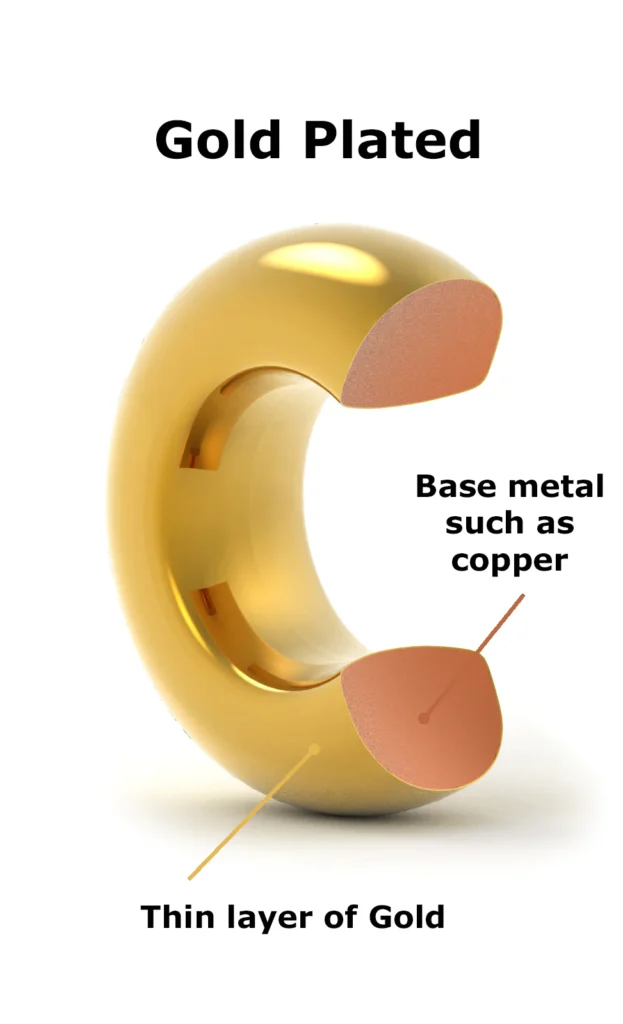Introduction
Before knowing how long it lasts, understand what gold plating is. It is the process where a thin layer of gold is bonded onto a base metal or is a type of metal jewelry covered with a very thin layer of real gold.

There are some misconceptions about gold-plating durability-
- Gold-plated items tarnish easily
- It is not durable
- It is less expensive due to poor quality.
All gold-plate jewelry starts with a sterling silver base. It is a durable, lightweight metal. It looks lovely on all skin types and won’t cause irritation, which makes it an easy choice for everyday wear.
Unveiling the Gold Plating Process
Stainless steel is known for its exceptional corrosion resistance. When gold is electroplated onto stainless steel, the result is a product that combines the elegance of gold with the durability of stainless steel.

Here are some steps for gold-plating
Surface preparation- The surface of the metal that is going to be plated must be free from any dirt or oil.
Cleaning and Rinsing- After the surface is prepared and a visual inspection is done, electrocleaning, ultrasonic cleaning, or steaming usually occur. This is the deeper stage of cleaning that ensures that the surface is ready for the next step. The piece will be rinsed with water to remove any residue from the purifying agents.
Strikes- A buffer layer – called a flash layer- usually of nickel, is then applied to the base material. This improves the bonding between the plating and the underlying surface.
Rinse Again- The piece is rinsed thoroughly with water to remove any cleaning agents.
Base Coat- If a base coat below gold is used, it is usually nickel. There are many layers of plating done on one particular piece.
Final Coating- With time, temperature, and voltage carefully controlled, the piece is submerged in the plating solution to attract gold ions to the surface. Different voltages and temperatures are required for different types of metal.
Final Rinse- The piece will be rinsed off with water and hung to dry after the final coating.
Occasionally, the immersion step into the chosen plating metal needs to be repeated.
Gold coating in thickness can range from 0.17 to 2.5 microns, the ideal thickness benign around 0.5 to 1.0 microns and of at least 10k gold quality. Its longevity depends on the thickness of the layer, which can vary, but it is typically less than 1 micron.
Factors Influencing Gold Plating Lifespan
Here are some factors that influenced the lifespan of gold-plating
Daily wear and exposure to chemicals like perfumes, lotions, and sweat can gradually wear away the gold plating. To prolong its lifespan, consider removing your jewelry before engaging in activities that may cause damage.

The acidity and composition of sweat, in combination with the pH level of our skin, can either extend or diminish the life of the gold plating.
Store your pieces separately in cool, dry places, ideally in a jewelry box or pouch. This prevents scratching and tarnishing.
Harsh chemicals, including chlorine and household cleaning agents, It is advisable to remove your jewelry when working with such chemicals to avoid potential damage.
Regular maintenance is crucial. Gently clean your gold-plated jewelry with a soft cloth to remove any dirt or residue. Periodic cleaning helps retain the jewelry’s brilliance and shine.
Signs of Wear and Tear
Check the gold-plated surfaces for fading or discoloration, indicating damage. Cutting, blurring, or reduced brightness are also major symptoms. Pay close attention to areas of high contact, such as seams or edges, where the coating is likely to deteriorate more rapidly.

Regular inspections are necessary to catch early signs, prevent further damage, and preserve the item beautifully. Timely intervention, such as re-coating or proper maintenance, ensures longevity. Encourage discernment in users to regularly check their gold-plated products, foster a more conservative approach, and extend their lifespan.
In addition to visual cues, changes in tactility can indicate gold-plated wear. A rough or uneven weave may indicate thinning.
Check for any exposed metal surfaces, as this weakness can cause corrosion. Pay attention to weight changes, as too much wear can affect the overall weight of the item. Also, look for signs of wear and tear, especially around the edges and corners.
Encourage users to regularly inspect jewelry, accessories, or household items, and use soft tissues for gentle cleaning. Emphasize that early attention to damage improves the product’s appearance and prevents allergic reactions from prolonged use of bare metal tips.
Maintenance Tips for Prolonged Brilliance
Maintaining the longevity and storage quality of various items such as jewelry, silverware, and other valuables, minimizing hard materials, professional storage time, and re-coating.

- Store items separately to prevent scratching or damage.
- Moisture can lead to tarnishing and corrosion. Store items in a dry environment and consider using moisture-absorbing products like Silica gel packets.
- Place anti-tarnish strips or tabs in storage containers to help prevent the tarnishing of metals like silver.
- Keep items away from household chemicals, perfumes, and cosmetics, as these can tarnish or corrode metals and damage gemstones.
- Consider re-plating when the original plating starts to wear off.
Realistic Expectations and Varied Lifespans
There are some factors on which the lifespan of gold-plating depends-
- High-quality metals like gold and platinum are durable and less prone to tarnishing or corrosion.
- For longevity, the thickness of the gold layer must be less than 1 micron.
- Professional cleaning is more beneficial for increasing the lifespan of materials.
- Jewelry that is worn daily, like engagement ring, may experience more wear and tear and can cause damage.
Here are some general guidelines for various jewelry-
- Gold and platinum are durable metals with a long lifespan, but they require proper maintenance, care, and professional cleaning as well to increase their lifespan.
- Silver jewelry is easily tarnished; to avoid this, clean it with polished cloth to maintain its shine.
- Customized jewelry is less durable; for this reason, it requires proper handling and care.
- Pearls are easy to tarnish and scratch; keep them away from chemical products like perfumes and harsh chemicals.
Quality Matters: Solid Gold vs. Gold Plating
Comparison between solid gold and gold plating
| Solid gold | Gold plating | |
| Longevity | Can last forever | The average lifespan of two years |
| Durability | More durable | Less durable |
| Affordability | More expensive | Less expensive |


Solid gold is a higher initial investment, and its durability and longevity make it cost-effective over time. But while gold-plating jewelry is more budget-friendly, it may require replacement and maintenance over time.
Conclusion
You should ensure your jewelry is always sparkling and beautiful. Your jewelry’s lifespan can be extended by taking good care of it. Some jewelry can be expensive, so it is important to protect its value.
